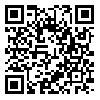Volume 21, Issue 4 (December 2023)
Iranian Rehabilitation Journal 2023, 21(4): 655-662 |
Back to browse issues page
Ethics code: code: (JAM/EC/5/20/7)
Download citation:
BibTeX | RIS | EndNote | Medlars | ProCite | Reference Manager | RefWorks
Send citation to:



BibTeX | RIS | EndNote | Medlars | ProCite | Reference Manager | RefWorks
Send citation to:
Lefta R M, Abdulrazaq A S, Shlash A M J. The Relationship Between Bullying Behaviors and Self-esteem Among Primary School Students in Iraq. Iranian Rehabilitation Journal 2023; 21 (4) :655-662
URL: http://irj.uswr.ac.ir/article-1-1985-en.html
URL: http://irj.uswr.ac.ir/article-1-1985-en.html
1- Department of Health and Nursing, College of Nursing, University of Al-Ameed, Karbala, Iraq.
2- Department of Adults Health Nursing, College of Nursing, University of Babylon, Babylon, Iraq.
2- Department of Adults Health Nursing, College of Nursing, University of Babylon, Babylon, Iraq.
Abstract: (2312 Views)
Objectives: This study aims to determine the relationship between demographic data and self-esteem levels among school-age students.
Methods: A descriptive research design (correlational design) was conducted using probability random sampling included 240 participants. The study instruments were the index of self-esteem (ISE) and the bully scale. The statistical methods included a percentage test, normal distribution test, Mean±SD test, t-test and Spearman test using SPSS software, version 26.
Results: The study results showed the analysis of the demographic characteristics of the target sample, a large number of the samples were in the age group of 10-11 years and boys. Also, the study results showed the evaluation responses for the study subject about bullying victims and self-esteem that most students suffer from strong bullying (65.5%) and most students have low self-esteem (81.2%). However, a significant relationship is observed between evaluation responses for bullying victims and self-esteem domains at a P<0.05.
Discussion: The present study concludes that most students’ responses to bullying victims are strong bullying, the study highlights the potential effect of bullying on students’ self-esteem and raises potential problems. The results suggest that increasing students’ self-esteem may be an effective strategy to enhance student outcomes. The study recommends that further studies are required on the nature of this event that lead to defining the etiology of bullying victims. It should include family dynamics and other situations of vulnerability, as well as qualitative strategies for early detection and investigation of bullying behaviors.
Methods: A descriptive research design (correlational design) was conducted using probability random sampling included 240 participants. The study instruments were the index of self-esteem (ISE) and the bully scale. The statistical methods included a percentage test, normal distribution test, Mean±SD test, t-test and Spearman test using SPSS software, version 26.
Results: The study results showed the analysis of the demographic characteristics of the target sample, a large number of the samples were in the age group of 10-11 years and boys. Also, the study results showed the evaluation responses for the study subject about bullying victims and self-esteem that most students suffer from strong bullying (65.5%) and most students have low self-esteem (81.2%). However, a significant relationship is observed between evaluation responses for bullying victims and self-esteem domains at a P<0.05.
Discussion: The present study concludes that most students’ responses to bullying victims are strong bullying, the study highlights the potential effect of bullying on students’ self-esteem and raises potential problems. The results suggest that increasing students’ self-esteem may be an effective strategy to enhance student outcomes. The study recommends that further studies are required on the nature of this event that lead to defining the etiology of bullying victims. It should include family dynamics and other situations of vulnerability, as well as qualitative strategies for early detection and investigation of bullying behaviors.
Article type: Original Research Articles |
Subject:
Nursing
Received: 2023/06/13 | Accepted: 2023/09/5 | Published: 2023/12/1
Received: 2023/06/13 | Accepted: 2023/09/5 | Published: 2023/12/1
Send email to the article author








